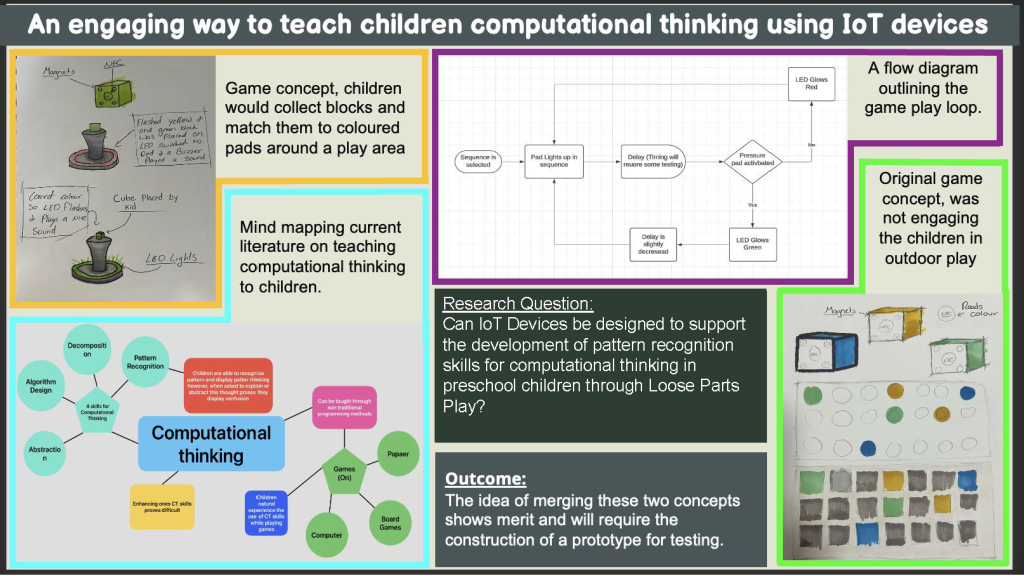An Engaging Way to Teach Children Computational Thinking Using IoT Devices
Dylan Meyer
Supervisor: Dr Kellie Vella
The use of digital technologies to enhance children’s learning experience is not a new concept. However, outdoor play isn’t a context that these technologies are typically designed for. In tandem, there is an ever-growing push to introduce computational thinking skills to this age group. Therefore, we asked: can IoT devices be designed to support the development of pattern recognition skills for computational thinking (CT) in preschool children through Loose Parts Play? We aimed to merge the complexities of teaching computational thinking with the principles of Loose Parts Play (LPP). LPP is a form of outdoor play that is unstructured, and the children are allowed to play in any way they want often with lose objects provided to them.
To explore the challenge of bridging CT teaching with LPP, I employed a research-through-design approach utilising mind maps, drawing, interview and design iteration. In conjunction with these methods, I was consulting my supporting researchers on ideas and direction. I also conducted an interview with an early childhood educator and consulted with them to discuss ideas of how to effectively engage this age group.
Through my research, I identified pattern recognition as the computational thinking concept most compatible with outdoor play. From this, I designed a game that integrates outdoor play with pattern recognition, addressing the three key benefits of outdoor activities:
- Physical activity: The game encourages children to run between points.
- Social interaction: Teamwork is promoted as players collaborating to complete patterns more efficiently.
- Creative thinking: Children are free to explore innovative ways to solve the patterns.
Lastly, I worked with my supporting researchers to design an effective project handover so they can continue to explore this idea.
Media Attributions
- An engaging way to teach children computational thinking using IoT devices © Dylan Meyer is licensed under a CC BY-NC (Attribution NonCommercial) license


